Last week, the Student Discipline Task Force submitted their report to the Arkansas State Board of Education, and OEP was pleased to present the annual report on student discipline.
OEP’s report examines student discipline in Arkansas public schools. We identify trends and a number of key student outcomes related to student discipline in the Arkansas public schools. While the data are only limited to what schools report, there are several meaningful findings from this work. While we recommend the full report and this introductory policy brief, today we wanted to share the highlights of what we found.
What are trends in reported student infractions and associated consequences?
- There has been an 87% increase in reported discipline infractions since 2012-13, with over 270,000 discipline referrals in 2016-17. We believe the increase in referrals likely reflects greater focus on reporting discipline infractions as opposed to an increase in misbehavior in Arkansas schools.
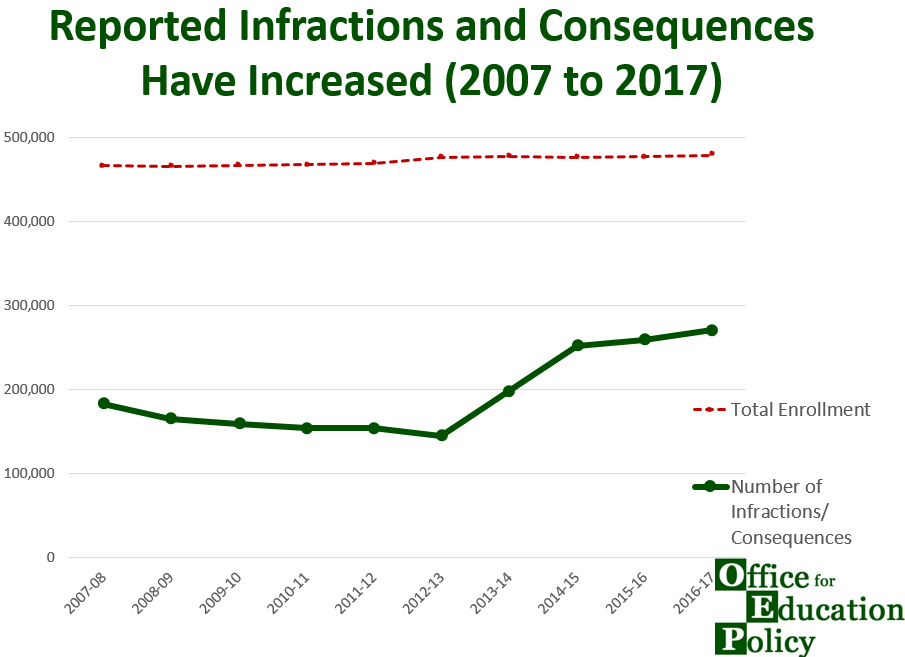
- Over 80% of discipline referrals are for insubordination, disorderly conduct, or “other” infractions.
- The majority of the increase in infraction referrals has been for “other” infractions. In 2016-17, additional reporting categories were included, but over a third of infractions remained identified only as “other”.

- Over 93% of discipline consequences are for out-of-school suspension (OSS), in-school suspension (ISS), or “other” action. There has been a decline in reported reliance on OSS, ISS, and corporal punishment over time.
- The majority of the increase in consequences has been for “other” actions. In 2016-17, additional reporting categories were included, but about 19% of consequences remained identified only as “other”. While trends away from exclusionary discipline might indicate benefits for students, knowing more about what the “other” consequences are is important for understanding whether this represents a meaningful change for students.
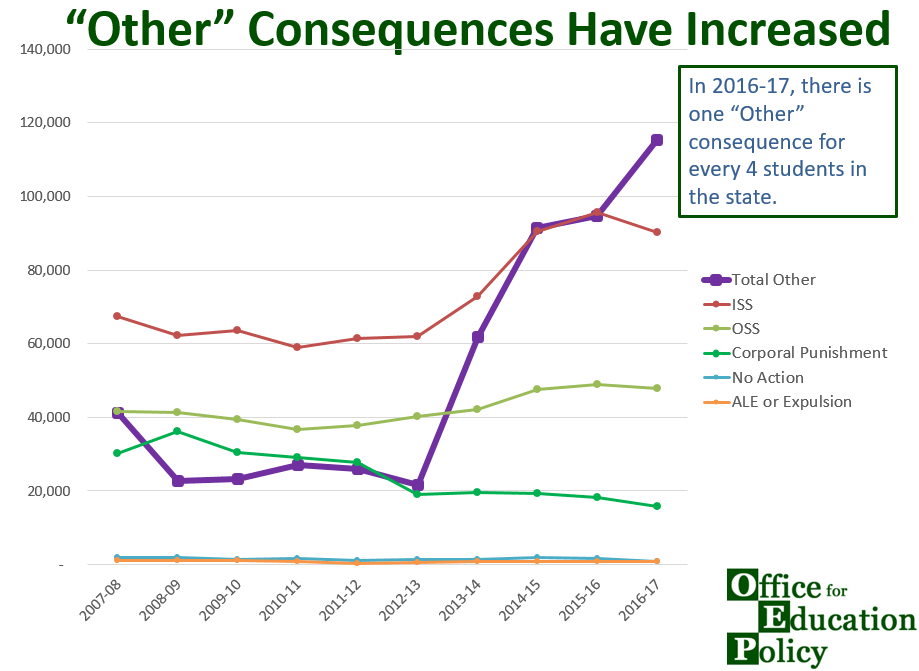
Are schools complying with Act 1329, which bans the use of OSS as a consequence for truancy?
- The use of OSS for truancy declined from about 14% of all truancy cases in 2012-13 to about 7% of cases in 2016-17.
- In 2016-17, 76 schools reported at least five or more truancy infractions and reported using OSS in at least 10% of those cases. Many of these were concentrated in a few districts.
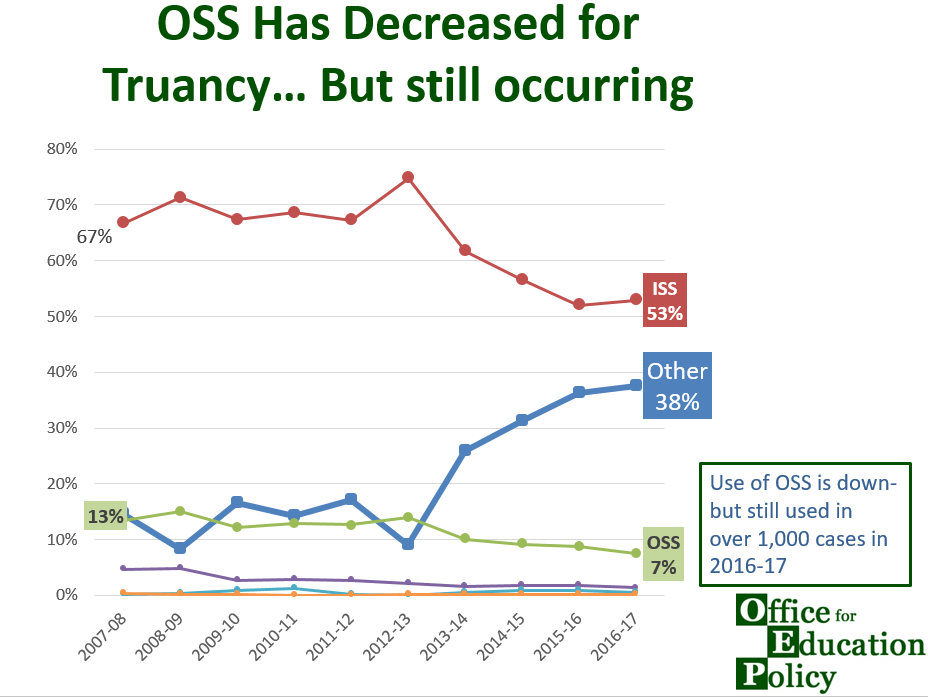
Are there racial or programmatic disproportionalities in school discipline?
- Disproportionalities by race, free- and reduced- price lunch eligibility, and special education status exist both in terms of the number of referrals for infractions of various types, as well as in the likelihood of receiving exclusionary discipline, conditional on referral for a particular type of infraction. For example, black students receive 117.6 referrals per 100 students, relative to only about 37-40 for white students, Hispanic students, or students of other races. Then, conditional on being written up for any infraction, Black students receive OSS, expulsions, or referrals to ALE in about 25% of these cases, relative to only about 15% for students of other races.
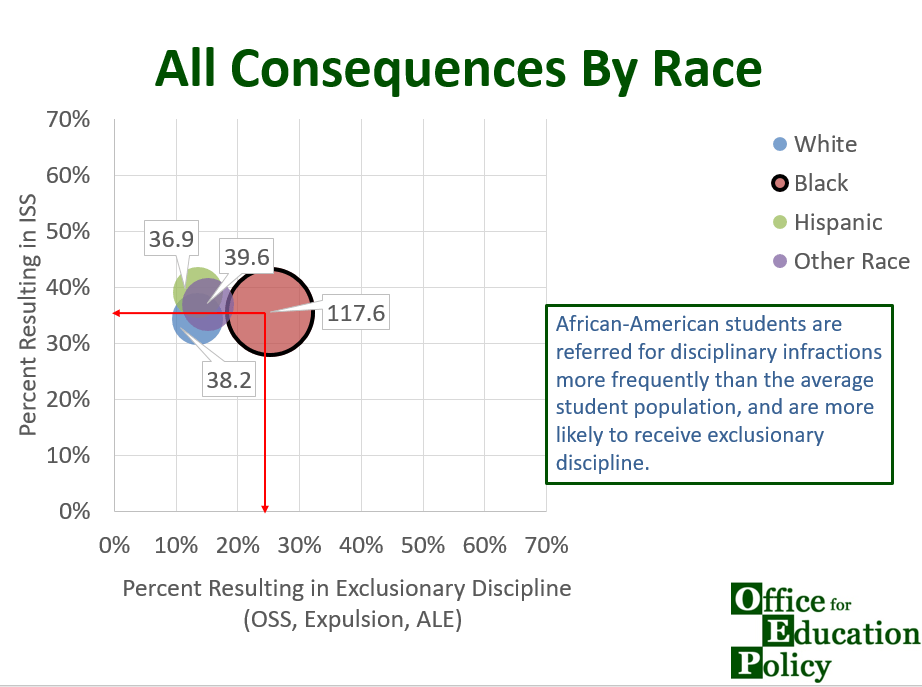
Which types of schools are High-Exclusion schools?
- Certain types of schools in the state are more likely to administer lengthy exclusionary punishments: schools with greater proportions of black students, high schools and middle schools (relative to elementary schools).
- There also appears to have been a decline in the severity used, on average, between 2014-15 and 2016-17.
What is the relationship between student absenteeism and exclusionary discipline?
- There is a moderate correlation between student absenteeism and OSS days received, with the strongest correlations between grades 7 and 10.
- Students marked as chronically absent in those grades received 0.5 to 0.64 more days of OSS on average, compared to those not chronically absent.
- This suggests that schools seeking to tackle absenteeism may consider discipline reforms as one possible solution.
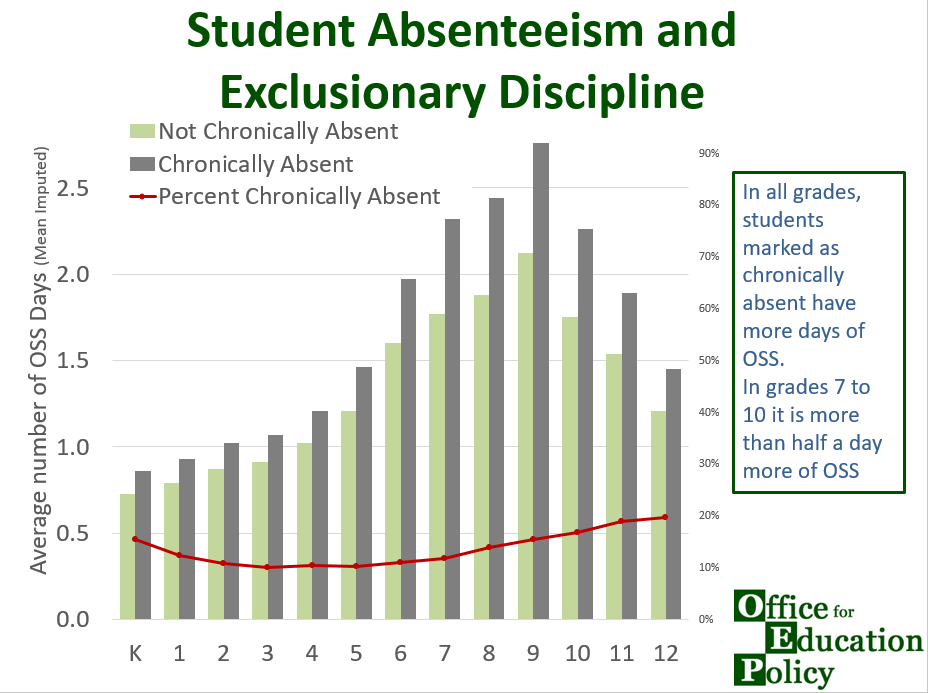
What is the relationship between educational attainment and exclusionary discipline?
- Exclusionary discipline in high school (and particularly ninth grade) is associated with lower likelihood of high school graduation and lower likelihood of enrolling in college, conditional on a variety of student characteristics as well as baseline achievement in eighth grade.
- The magnitude of these relationships decline after controlling for the behaviors (types of infractions) reported, although there is still a small relationship detected in some cases.
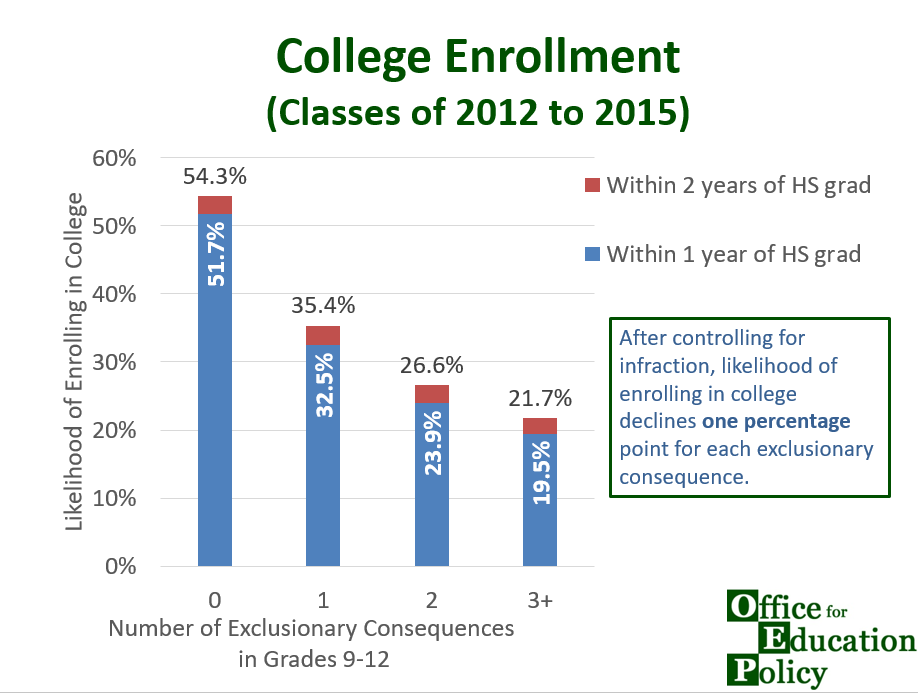
Act 1329 has provided an opportunity to examine student discipline the the state. The issue is complex, but one of the Student Discipline Task Force recommendations was that schools consider alternatives to exclusionary discipline practices when addressing student behaviors. The Board expressed concerns that OSS continues to be used as a consequence for truancy, and discussed the importance of continued effort to support schools and communities in reducing the use of exclusionary discipline for students. We look forward to continued discussion about improving learning environments for Arkansas students!
